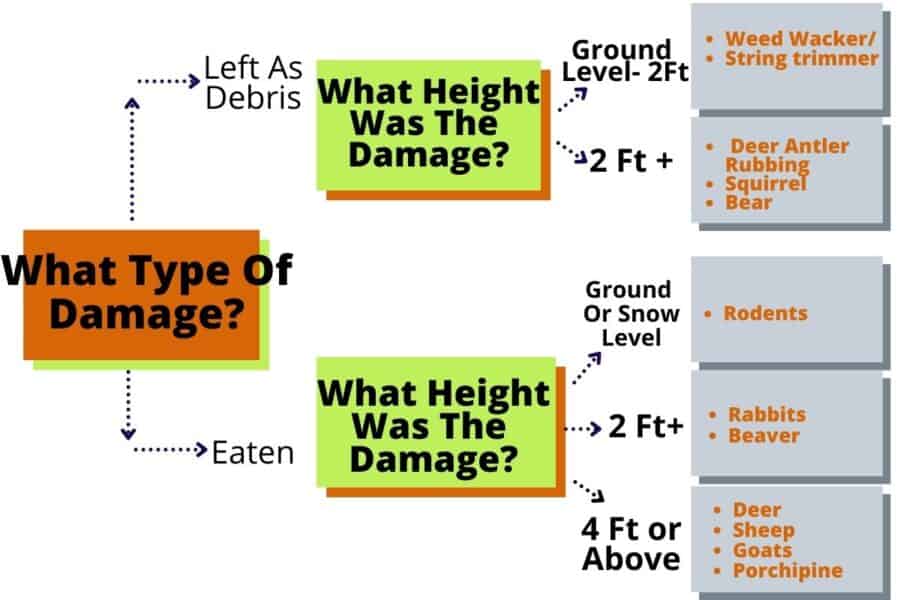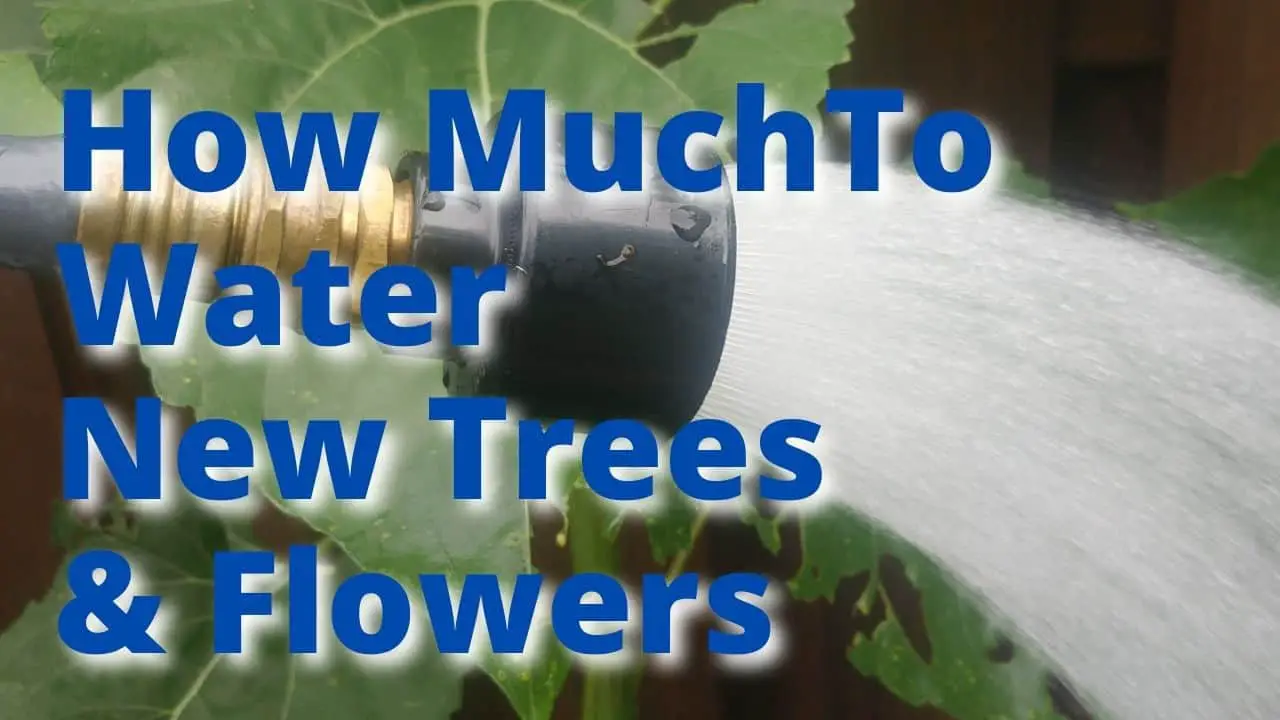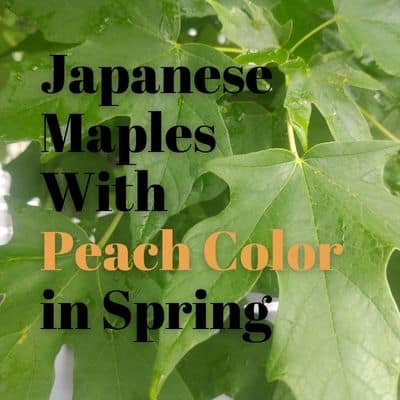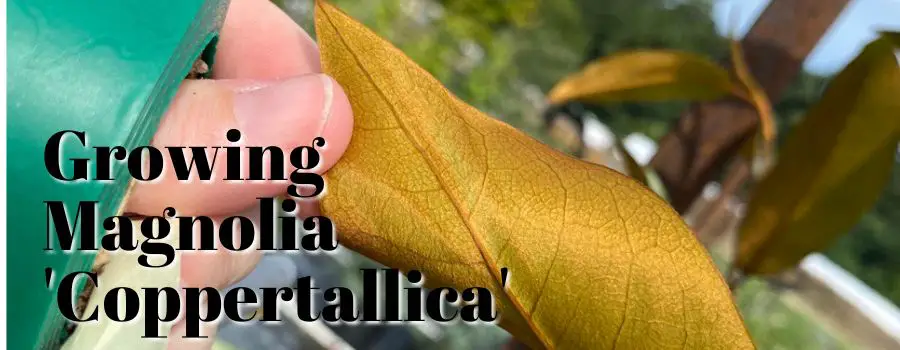What is eating the bark off my trees and shrubs? In your landscape, the most likely culprits are rodents down low, rabbits 2-4 ft high, deer 4-6 ft high, and squirrels in the uppermost branches.
There are many animals that can eat tree bark, including:
Deer
Rodents
Squirrels
Porcupines
Bear
Beaver
Sheep
Goat
Cattle
Humans (Survivalists, not likely, but yes for real….)
To find out what actually is tampering with your trees or shrubs, you have to play detective and look at the clues.

These are the questions you need to answer to find out the culprit.
Was the bark actually eaten, or just left as debris?
Bark damage can be from animals eating the inner layer of bark called the cambium layer, or animals damaging the bark with other goals in mind. The cambium eaters are usually rodents, rabbits, porcupines, sheep, and goats. Occasionally deer. Rarely, humans, it was much more common a century ago, but we have protein bars now. Yum.
The bark is also damaged just as a bystander; deer rubbing the velvet off their antlers in the fall, squirrels being squirrels, bear removing the bark looking for insects underneath, or just an accidental hit with the weed wacker.
At what height and what size was the bark damage?
Another really good clue is at what height the damage occurred. If it is low to the ground, under where the snow line was, you are looking for rodents. About 2-3 ft above the snow level, or the ground if you do not get snow, you are looking at rabbits and beavers. Porcupines are great climbers and gnaw on the more tender branches coming off the main trunk. While squirrels just strip off random patches from upper branches all the way down to the trunk.
What time of year bark did the bark damage happen?
Damage during the winter is often rodents, rabbits, and deer as food gets scarce and more difficult to find. Squirrels damage bark the most in the spring, and bears will mark trees by rubbing in the spring to help remove their winter coat.
What does the bark damage look like?
Is it sharp bites, claw marks, hourglass removal of wood as well as bark? Is the tree bent down, ragged bites, bark stripping, or complete ringing of the trunk? Gnawing or rubbing? Animal traces, scat, prints, burrows, fur, and the presence of tunnels. Take pictures and note these qualities and take them to a local hunter, or post on a forum to find out what the bark damage is coming from, if not from the lineup of usual suspects; rodents, rabbits, and deer.
Bark stripping – Wildlife Damage Management (extension.org)
Recognizing types of mammal damage to trees and woodland – Forest Research
-
Water New Trees & Flowers – Volume, Frequency & Best Tips

After transplanting trees, shrubs, annuals, and perennials, into your landscape, watering will be first on your list of concerns. Getting this right will solve the number 1 reason why plants
-
Japanese Maples W/ Unusual Peach Color on New Leaves In The Spring

ACER CIRCINATUM ‘SUNNY SISTER’ 6-8 6-7 peach lt green yellow/ orange Amoenum upright ACER ELEGANTULUM X PALMATUM ‘JOHNNIE’S GIANT’ 6-9 FAST 15 Peach dk green yellow/ orange Matsumurae upright ACER
-
What Japanese Maples Are Orange In The Fall?

Latin name zones height 10-15 yrs spring color summer color fall color leaf type tree shape ACER JAPONICUM ‘EMMETT’S PUMPKIN’ FULL MOON 5-9 12-15 org/over green dark green orange Palmatum
-
Magnolia ‘Coppertallica’ Exciting New Variety In My Garden

Magnolia ‘Coppertallica’ has a true metallic sheen that glimmers when it catches the sun on the undersides of the leaves. I did not believe it until I saw it myself.


